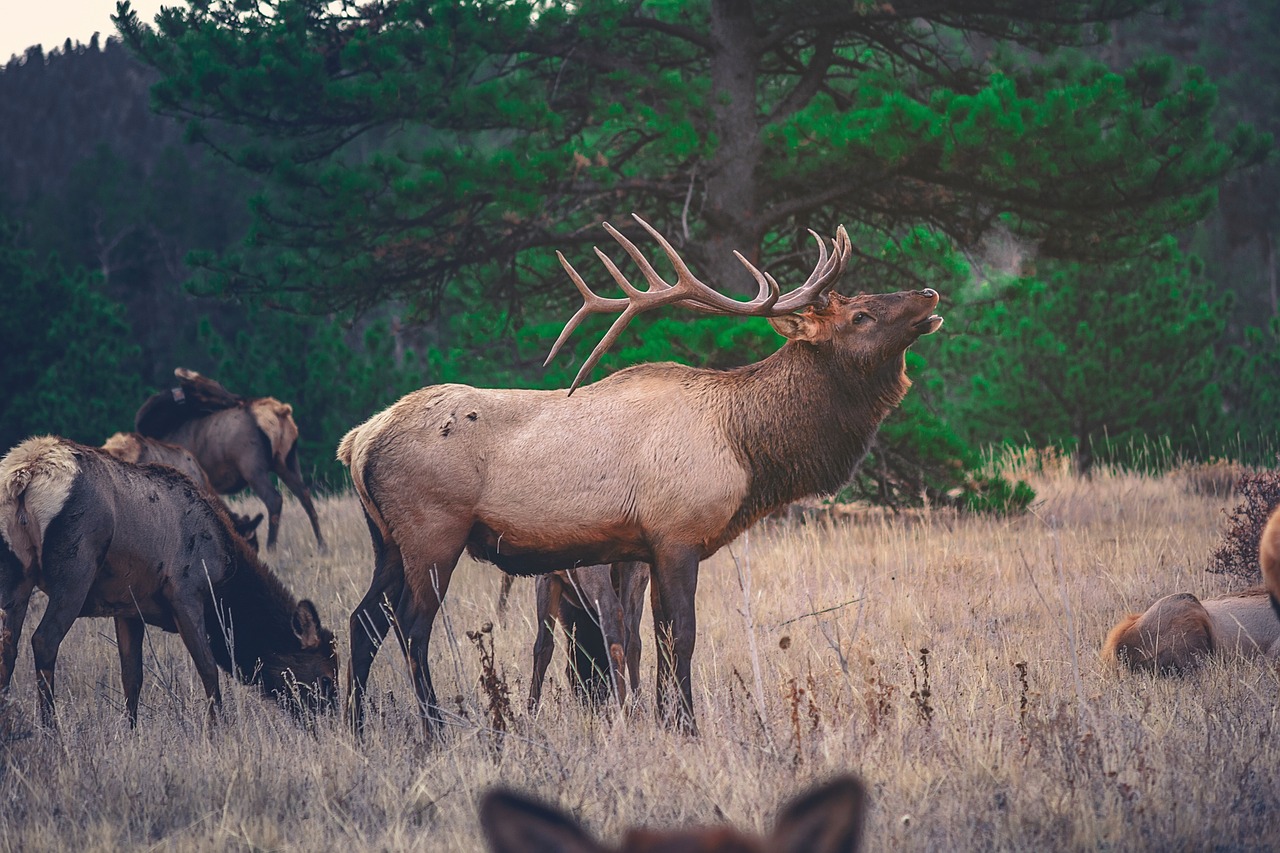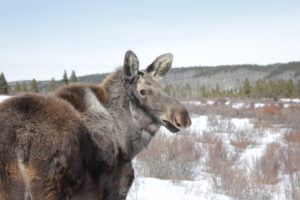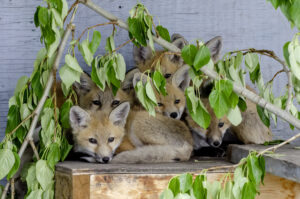By Julia Guame
What is Rutting Season?
Rutting season is the annual mating time for various animals including deer, moose and elk.1 During this time, the testosterone in these male animals increases, and they do all they can to impress the females in an attempt to mate.2
When is Elk Rutting Season?
In Alberta, the normal rutting season runs from around September 1 to around October 15.3 Although the season is only 1.5 months, the elk are very busy at this time, hoping to ensure that they have as many offspring as possible come calving season.
What Behaviours Do Elk Display During Rut?
Bugling
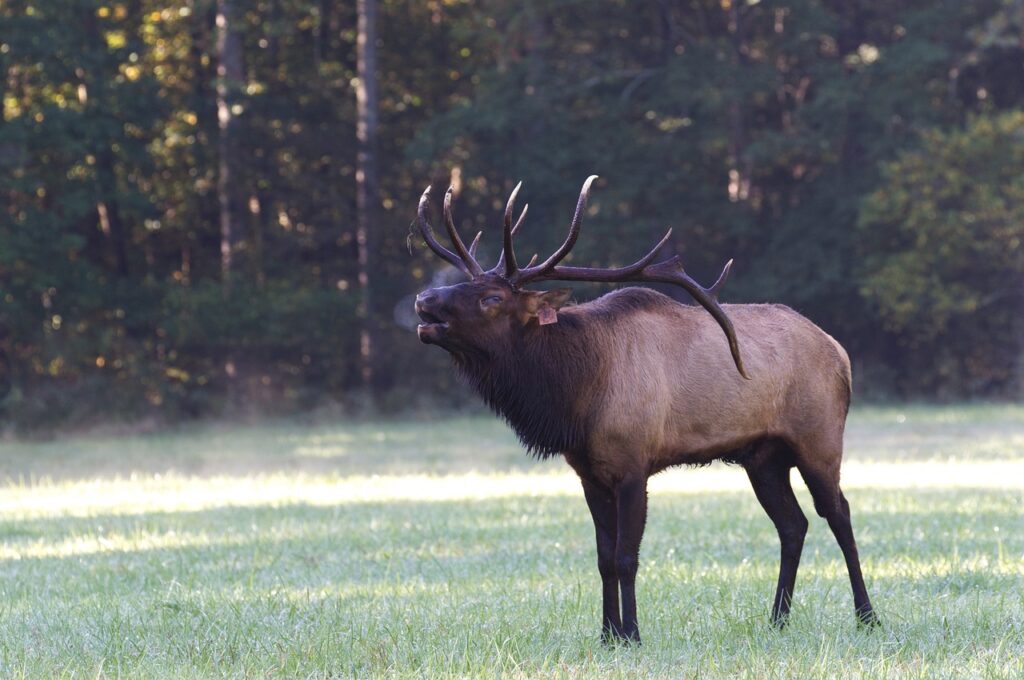
Bull elk (male elk) have many ways in which they try to win the hearts of the cow elk (female elk). Vocalizing, or ‘bulging’ is one of the main methods that bull elk use to attract cow elk. A strong, deep and loud bulge signifies a strong and mature male. Apart from using this sound to attract the ladies, it also works as a display of dominance and as a warning sign to other bulls, telling them to stay away from their cows.4 Interestingly, the term ‘rutting season’ comes from the Latin word for ‘rut,’ which is ‘roar.’ This aptly fits as ‘roaring,’ or bulging, is one of the bull elk’s main behaviours during this time.2
Antler Display
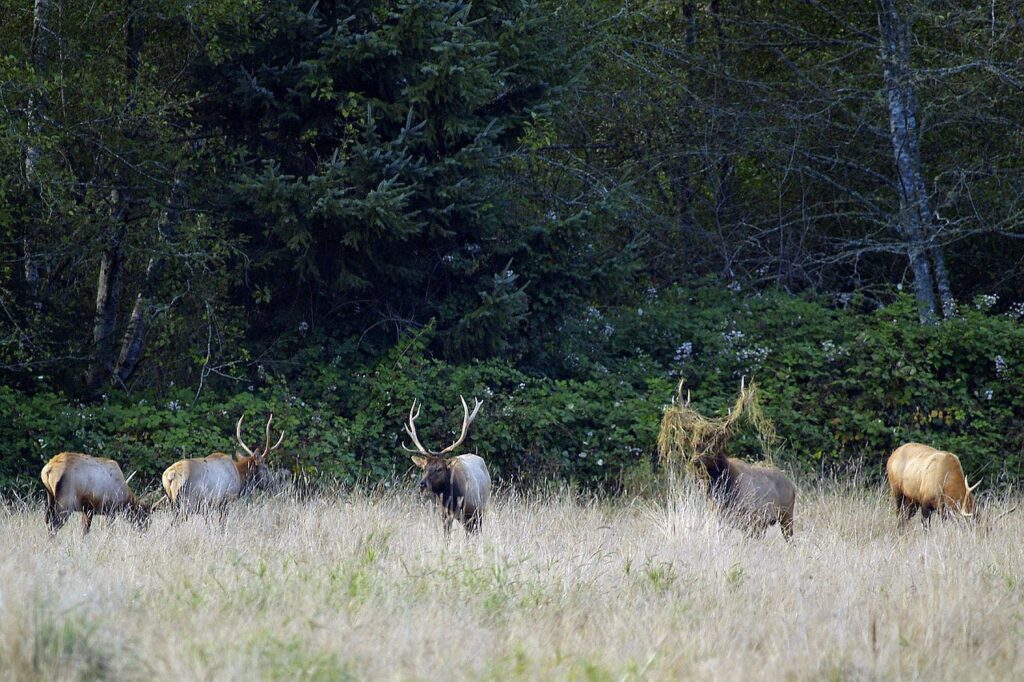
In rutting season, bull elk proudly show off their antlers. With an elk’s antlers shedding and regrowing back bigger every year, their antler size is a determinant of their age.5 Additionally, the antlers can be used as a display of health: symmetrical and chip/crack-free antlers tell the ladies that this elk isn’t sick or injured and has good genetics.5 Interestingly, bull elk have also been seen piling vegetation onto their antlers. This is thought to be another mechanism that the bulls use to appear larger and more attractive to the cows.4
Scent Spreading
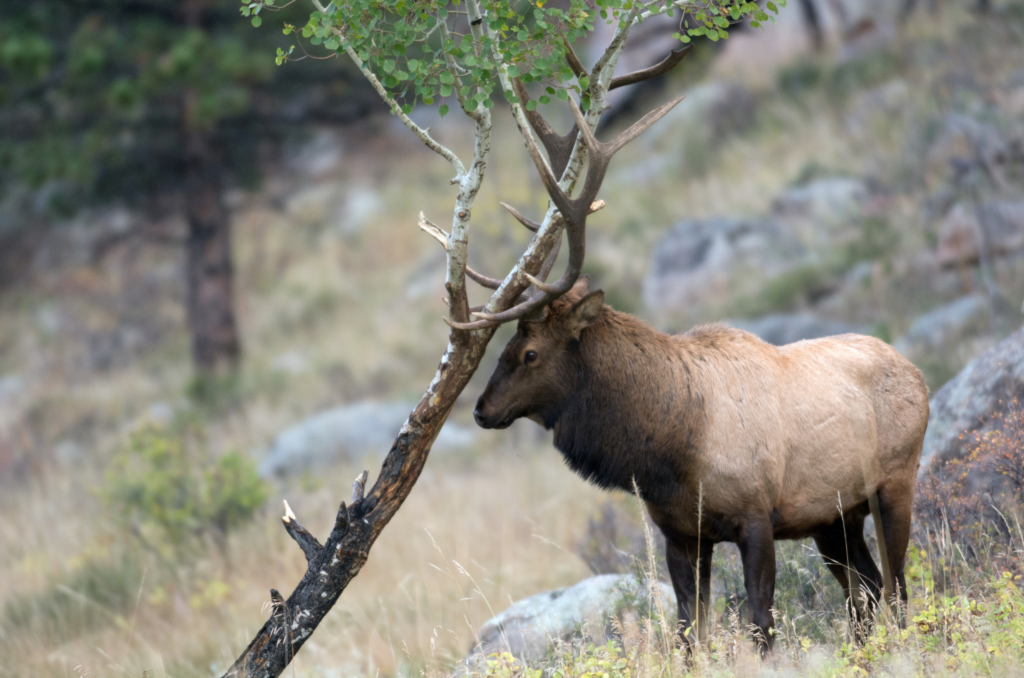
Bull elk have unique methods of spreading their scent and letting the cow elk know that they are nearby and looking to mate. In typical animal fashion, the bulls are commonly seen rubbing their bodies against trees during their rutting season, hoping to entice a cow.4,5 A not-so-normal method they use is wallowing, a method in which they urinate on the ground and then roll on it, coating their hair.4,5 The thought process behind this is that the strong, musky odor of their hair, plus their urine, gets spread by the wind and inhaled by males who get intimidated by the strong smell, while females are attracted to the scent.
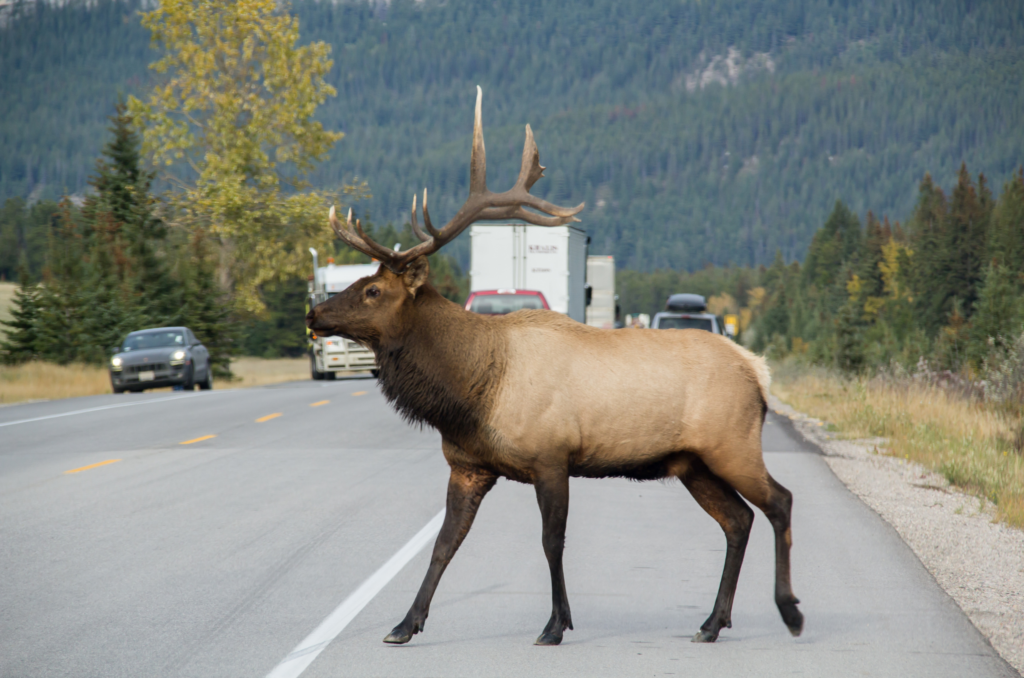
How Do Elk Act Around Humans During Rut?
As testosterone levels in the bull elk are highly elevated at this time, they are much more aggressive in their behaviour towards both other animals and humans.1,3 By having such a strong desire to mate with the female elk, the males will attack anything that comes close to themselves or to their female mates.3. It is extremely important to be aware of threatening behaviours male elk can exhibit during this time, which include pawing at the ground, lowering and pointing their antlers at you and charging towards you.3
How Can I Be Safe in The Woods During Rutting Season?
The simplest way to avoid any encounters with elk is to keep a safe distance from them. You should remain at least 30 meters away and should never approach them.3 Travelling in a group and making noise while you walk is another method to avoid elk encounters.3 If you are walking with your dog, it is important to keep them on a leash; a ‘free’ dog can be seen as a threat to an elk, baiting it to charge.3 Lastly, it would be a good idea to carry around an umbrella or coat to help you appear larger in the case of an encounter, and pepper spray to use as a deterrent in case of an attack.3
What Should I Do If I Encounter an Agitated Elk During Rutting Season?
If an elk gets too close to you and is showing signs of aggression, you should not charge towards it. Make yourself as big as possible, raising your hands/a coat/an umbrella/your backpack in the air and back away slowly, maintaining eye contact with the elk.3 It’s important not to turn and run away, as the elk may see this as an opportunity to continue charging. If close by, you can seek safety by climbing up a tree or another climbable object – elk cannot climb vertically.3 Most importantly, you should always get up and keep moving if knocked down and you should never play dead.3 This will not deter the elk from attacking and will cause more harm than good.
Be Aware
Like always, it’s important to give animals their space while you are in their territory. By keeping informed on safety/avoidance tips, rutting elk and humans can safely co-exist.
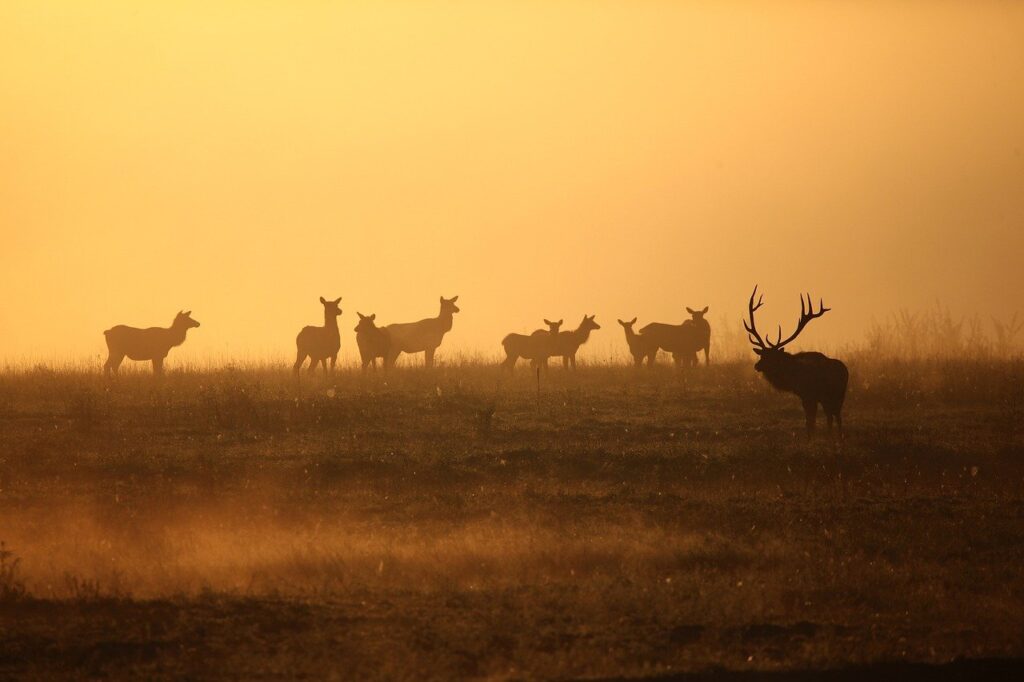
References
- BC Government News. “Watch for deer: rutting season is here.” Accessed September 2, 2024, https://news.gov.bc.ca/releases/2020TRAN0163-001934#:~:text=Rutting%20season%20is%20the%20annual,for%20deer%2C%20elk%20and%20moose
- Terrace, Caleb. “Understanding Deer Rut: When is Deer Rutting Season and What is The Rut?” Grizzly Coolers. October 20, 2023. https://grizzlycoolers.com/blogs/in-the-field/deer-rut-what-is-the-rut-when-is-deer-rut-season
- Government of Canada. “Elk Safety, Jasper National Park.” Accessed September 1, 2024, https://parks.canada.ca/pn-np/ab/jasper/securite-safety/faune-wildlife/wapiti-elk
- Elk Rut Season. “Elk Bull Rutting Behaviours.” Accessed September 2, 2024, https://www.elkrutseason.com/Elk-Bull-Rutting-Behaviors.html
- Ecotour Adventures. “What Happens During the Elk Rut?” Accessed September 1, 2024, https://www.jhecotouradventures.com/insights/page/elk-rut-behaviors

